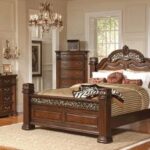decorated for Christmas
Ven House spectacularly decorated for Christmas
decorated for Christmas
Ven – the very name has a romantic ring. This glorious early-Georgian mansion, built for a rich London lawyer who bankrupted himself in the process, stands in gently rolling countryside near the Somerset village of Milborne Port. Grand without being uncomfortably large and formal without being chilly, it was designed by the West Country-based architect Nathaniel Ireson and closely resembles Buckingham House, one of the great lost houses of London. Yet while Buckingham House was later extended out of all recognition to form the battleship of Buckingham Palace, Ven has sailed serenely down the centuries to reach us almost completely unscathed. The country-house historian Henry Avray Tipping ranked it with Chatsworth and Belton in ‘representing the ideal of a country house’.
It was commissioned by James Medlycott, who bought the estate in 1698 and had by 1725 accumulated enough cash to rebuild the house in the latest style, with seven bays of soft-red brick framed by Corinthian pilasters and Ham-stone dressings. Medlycott had Somerset connections, but perhaps the real appeal of Milborne Port was that it was a rotten borough. By a quirk of history, this village of just 50-odd voters fielded two MPs, enabling wealthy candidates to buy their way into parliament. This is exactly what Medlycott did, three times in a row.
Unfortunately for him, in 1731 he was declared bankrupt and he died shortly after. However, his son Thomas managed to hang on to Ven. A hundred years on, Sir William Coles Medlycott employed Decimus Burton to reconfigure the house, removing the grand south staircase to create a new drawing room and adding an orangery and conservatory to the west, but otherwise respecting much of the original work. The twentieth century was less kind to the Medlycotts, who parted with much of the estate after the First World War and the house and grounds in 1957.
Since then, Ven has had a succession of different owners – a not uncommon fate among larger English country houses that have not been demolished or acquired by the National Trust. It is a happier fate than it might have had, but it does beg questions that are not often asked. How can a house built for an extended family and previously maintained by an army of servants be made to work comfortably for a couple and a staff of two or three? How important is continuity to the spirit of a place, or can that spirit be created at will, given plenty of money and a good- enough eye? Is there a difference between decorating and set-dressing? In short, what is a house like Ven for, once its original owners have gone?
Mike Fisher, one of its latest incumbents, says Ven is, quite simply, ‘my salvation’. He immediately laughs at the portentous sound of the word, but one can tell he really means it. ‘As soon as I arrive here on a Friday, I relax. It’s a reason for working as hard as I do.’ Mike is the founder of the architecture and interior design firm Studio Indigo (his London house was featured in the October 2018 issue of House & Garden). He and his partner bought Ven in 2015 from Jasper Conran, who had owned it for eight years.
Ven has attracted several owners with a pronounced decorative bent. During the Nineties, it was revived by the American collector and decorator Tommy Kyle, who had already transformed a series of houses and chateaux in France and the States. He furnished Ven in a grand French country style (as seen in the November 1999 issue of House & Garden). ‘Tommy saved the place – he sorted out the plumbing and wiring and the roof,’ says Mike. By contrast, Jasper went for a more authentic English look, although as he told The World of Interiors in October 2011, ‘I wanted a country house that looked like it had been lived in – a home, but with a quirky attitude to it.’
Mike is the first to admit that these were hard acts to follow. ‘I was in awe of taking on such an important house, but I wanted to do something in the same kind of tradition as Tommy and Jasper.’ He worked with the Dorset-based antiques dealer Edward Hurst, who had previously collaborated with Jasper and knew Ven well. ‘Edward was enormously helpful at tracking down pieces that are the right period for the house and also unique in some way,’ says Mike. ‘Houses of this period are quite dictatorial about how you furnish them. Ven’s layout is formal and rigorous, so the challenge was to make it comfortable and liveable.’
To that end, Mike has refurnished the house in a simpler, more modern style, mixing contemporary art with fine antiques and specially commissioned pieces, with help from his Studio Indigo colleagues Fleur Liversidge and Giorgia De Marchi. ‘The obvious thing to do would be to hang lots of dreary ancestral portraits,’ Mike says. ‘But most of my ancestors would probably have been sent to Australia, so Diarmuid Kelley’s contemporary portraits are my equivalents.’
source: house garden





